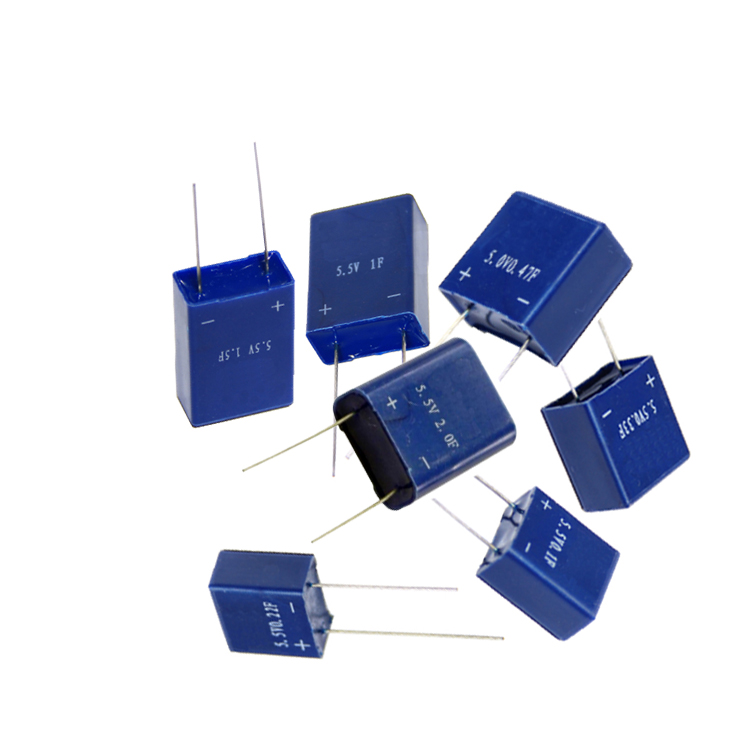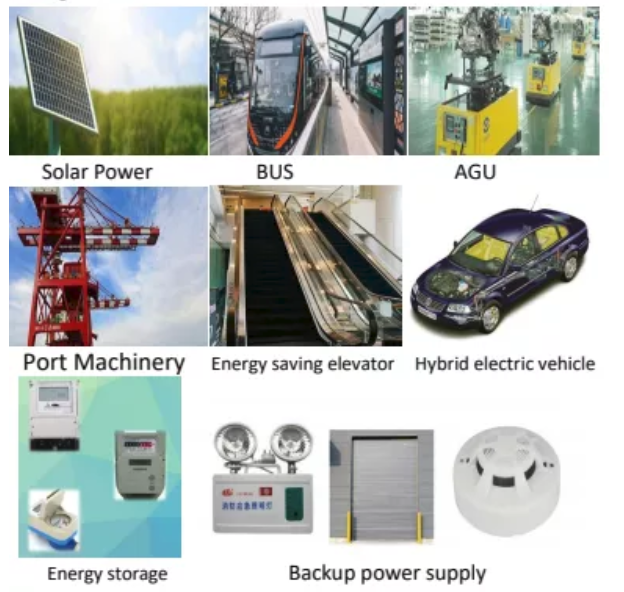Consulting phone:
135-3037-2041
(Mr.Wang)
Product introduction:
Hybrid ion capacitor battery generates chemical reaction, and the energy storage process is reversible, which is precisely because this supercapacitor can repeatedly charge and discharge hundreds of thousands of times. The difference between farad capacitance and ordinary capacitance is the difference in capacity. The capacity of ordinary capacitor is between 10000 and 40000 microfacies, and the capacity of super capacitor can reach thousands of farads, 1 farad=1 million microfacies, so the super capacitor is also called farad capacitance.
Series specification table:
series name | series | |||||||
type name | YKY-5R5 | |||||||
Rated voltage VR | 5.5V | |||||||
surge voltage | 5.8V | |||||||
Capacity range | 0.1F-2.0F | |||||||
Operating temperature range | -40℃~+65℃ | |||||||
Product life | Normal temperature cycle life: 25°C, 500,000 cycles between VR and 1/2VR, capacity decay ≤30%, internal resistance change ≤4 times | |||||||
High temperature endurance life: 65℃, keep VR, 1000 hours, capacity decay ≤30%, internal resistance change ≤4 times. | ||||||||
Product performance table:
| model | Voltage V | Capacity F | AC internal resistance mΩ1KHz | 24h leakage current uA | Product size mm | |||
width F±1 | Length A±1 | Height B±1 | Pitch P | |||||
| YKY-5R5-Z104VYA01 | 5.5 | 0.1 | 1200 | 2 | 6.6 | 12 | 13.5 | 7 |
| YKY-5R5-Z224VYA16 | 5.5 | 0.22 | 700 | 5 | 8 | 14.6 | 13.5 | 9 |
| YKY-5R5-Z334VYA06 | 5.5 | 0.33 | 600 | 8 | 9.6 | 18.1 | 18 | 11.5 |
| YKY-5R5-Z474VYA06 | 5.5 | 0.47 | 600 | 10 | 9.6 | 18.1 | 18 | 11.5 |
| YKY-5R5-Z105VYA07 | 5.5 | 1.0 | 240 | 20 | 11.6 | 22 | 25.5 | 15.8 |
| YKY-5R5-Z105VYA13 | 5.5 | 1.0 | 260 | 20 | 9.6 | 18.1 | 25.5 | 11.5 |
| YKY-5R5-Z155VYA07 | 5.5 | 1.5 | 240 | 30 | 9.6 | 18.1 | 25.5 | 11.5 |
| YKY-5R5-Z155VYA13 | 5.5 | 1.5 | 140 | 30 | 11.6 | 22 | 25.5 | 15.3 |
| YKY-5R5-Z205VYA13 | 5.5 | 2.0 | 140 | 30 | 11.6 | 22 | 25.5 | 15.3 |
Product display:
Improper use will cause electrolyte leakage and other phenomena; Compared with aluminum electrolytic capacitor, its internal resistance is large, so it can not be used in AC circuit;
1. Unlike batteries, it may be better than batteries in some applications. Sometimes it is a better way to combine the power characteristics of the capacitor with the high energy storage of the battery.
2. It can be charged to any potential within its rated voltage range and can be fully discharged. The battery works in a narrow voltage range due to its own chemical reaction. If it is over-discharged, it may cause sexual damage.
3. The state of charge and voltage constitute a simple function, while the state of charge of a battery includes a variety of complex conversions.
4. Compared with the traditional capacitor with the same volume, the battery can store more energy than the supercapacitor with the same volume. In some applications where power determines the size of energy storage devices, supercapacitors are a better way.
5. It can transmit energy pulse repeatedly without any adverse effect. On the contrary, if the battery transmits high power pulse repeatedly, its life will be greatly reduced.
6. It can be charged quickly, but the battery will be damaged if it is charged quickly.
7. It can be cycled hundreds of thousands of times, while the battery life is only a few hundred cycles
Product display:

Product Description:
Advantages of double layer super Faraday capacitor
High reliability, cycle life: > 500000 times
Good frequency characteristics, high temperature resistance, low temperature rise and high adhesion
High energy conversion efficiency
Small loss during use

Green power supply :
The charging circuit is simple, without the charging circuit like charging battery, and maintenance free for long-term use
product photo and desing:
It is widely used in gas meters, water meters, heat meters, meter reading systems, etc. for starting devices, detonators, tax controllers, toys, power equipment, etc
testing method:
1. Electrostatic capacity test method:
(1) Test principle
The test of the electrostatic capacity of the supercapacitor is to use the method of constant current discharge of the capacitor , and calculate it according to the formula.
C=It(U1-U2)
In the formula: C - electrostatic capacity, F;
I-constant discharge current, A;
U1, U2 - use voltage, V;
t-Discharge time required for U1 to U2, S
(2), test procedure
Charge the capacitor with a current of 100A, charge the capacitor to the working voltage and keep the voltage constant for 10 seconds, then discharge the capacitor with a current of 100A, take U1 as 1.2V and U2 as 1.0V, record the discharge time within this voltage range, and the total cycle Capacitance, take the average value.
2. Stored energy test
(1) Test principle:
The test of supercapacitor energy is carried out by the method of discharging the capacitor with constant power to 1/2 of the working voltage with the given voltage range of the capacitor. The output energy W of the capacitor is obtained from the relationship between the constant discharge power P and the discharge time T, namely:
W=PT
(2) Test procedure
Charge the capacitor to the working voltage with a constant current of 100A, and then keep it constant until the charging current drops to the specified current (10A for traction type, 1A for start-up type), after 5 seconds of rest, discharge the capacitor with constant power to 1/2 of the working voltage, record Discharge time and calculate magnitude. Repeat the measurement 3 times and take the average value.
3. Equivalent series resistance test (DC)
(1) Test principle
The internal resistance of the capacitor is measured according to the sudden change of the voltage within 10 milliseconds of the capacitor disconnecting the constant current charging circuit. That is: in the formula:
R - the internal resistance of the capacitor;
U0 - capacitor cut off the voltage before charging;
Ui - cut off the voltage within 10ms after charging;
I - cut off the current before charging.
(2) Measurement process
Charge the capacitor with a constant current of 100A, disconnect the charging circuit when the charging working voltage is 80%, use a sampling machine, record the voltage change value within 10 milliseconds after the capacitor is powered off, and calculate the internal resistance, repeat 3 times, and take the average value.
4. Leakage current test
After charging the capacitor to the rated voltage with a constant current of 100A, charge the capacitor with a constant voltage for 30min at this voltage value, and then leave it open for 72h. During the first three hours, the voltage value was recorded every minute, and during the remaining time, the voltage value was recorded every ten minutes.
Calculate the self-discharge energy loss, SDLF=1-(V/VW)2, and the calculation time points are: 0.5, 1, 8, 24, 36, 72h.
Note: The voltage tester must have high input impedance to minimize the impact of discharge.